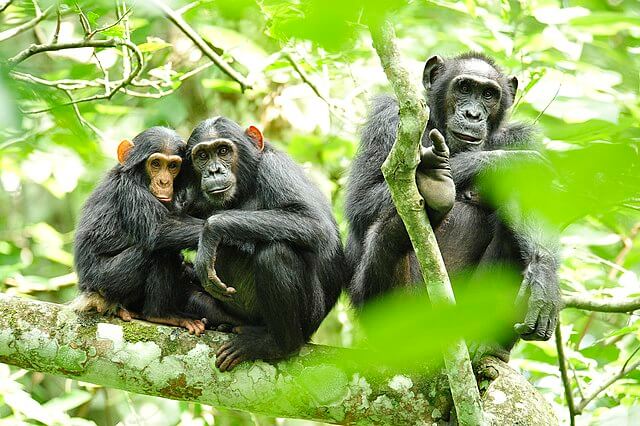
Up to a third of Africa’s great apes face threats from an increase in mining activities driven by the demand for minerals essential for renewable energy technologies, a new study reports.
Researchers estimate that about 180,000 gorillas, bonobos, and chimpanzees are endangered due to the surge in need for critical minerals like copper, lithium, nickel, and cobalt. These minerals are pivotal for developing clean energy solutions such as wind turbines and electric vehicles, but their extraction is leading to the destruction of tropical rainforests, the natural habitats of these apes.
“Africa is experiencing an unprecedented mining boom threatening wildlife populations and whole ecosystems,” researchers wrote in the paper, published in Science Advances.
Africa, which harbours about 30% of the planet’s mineral resources, is seeing a rapid escalation in mining operations due to the anticipated growth in renewable energy production. This development poses multiple threats to great apes through habitat destruction, increased pollution, and disease transmission.
Additionally, the construction of access roads through forests heightens the risk by facilitating easier entry for hunters and farmers, further endangering these species. Currently, over two-thirds of primate species are at risk of extinction.
“A shift away from fossil fuels is good for the climate but must be done in a way that does not jeopardise biodiversity,” said lead researcher Dr Jessica Junker from the non-profit conservation organisation Re:wild. “In its current iteration it may even be going against the very environmental goals we’re aiming for … It is crucial for everyone to adopt a mindset of reduced consumption.”
A study conducted in collaboration with researchers from the German Centre for Integrative Biodiversity Research and Martin Luther University Halle-Wittenberg analysed data from operational and pre-operational mining sites across 17 African countries.
It mapped regions of intense mining activity against areas with high densities of apes. The research defined a direct impact buffer zone of 10 kilometres around each mine site and an indirect impact zone extending 50 kilometres.
Findings indicated that the most severe impacts on apes were concentrated in West African countries such as Liberia, Sierra Leone, Mali, and Guinea. In Guinea alone, mining activities could affect over 23,000 chimpanzees, constituting 83% of the national population, either directly or indirectly.
The study also revealed that many areas rich in biodiversity and crucial for the survival of various species are not under protection. Indeed, 20% of mining sites overlapped with zones identified as unique for biodiversity or labeled as “critical habitats.”
Junker said: “Companies, lenders and nations need to recognise that it may sometimes be of greater value to leave some regions untouched to mitigate climate change and help prevent future epidemics.”
Researchers suggest that more robust measures could be implemented to reduce the negative consequences of mining on endangered species. Currently, mining firms are not mandated to disclose biodiversity data publicly, which might mean that the impacts could be even greater than reported.
Biodiversity offset schemes, designed to compensate for the environmental impact of mining, often last only as long as the mining projects themselves, even though the damage to great ape populations is permanent.
“Mining companies need to focus on avoiding their impacts on great apes as much as possible and use offsetting as a last resort, as there is currently no example of a great ape offset that has been successful,” said Dr Genevieve Campbell from the International Union for Conservation of Nature, who is also a senior researcher at Re:wild.
——————————————————————————
At Natural World Fund, we are passionate about stopping the decline in our wildlife.
The decline in our wildlife is shocking and frightening. Without much more support, many of the animals we know and love will continue in their decline towards extinction.
When you help to restore a patch of degraded land through rewilding to forests, meadows, or wetlands, you have a massive impact on the biodiversity at a local level. You give animals a home and food that they otherwise would not have had, and it has a positive snowball effect on the food chain.
We are convinced that this is much better for the UK than growing lots of fast-growing coniferous trees, solely to remove carbon, that don’t actually help our animals to thrive.
This is why we stand for restoring nature in the UK through responsible rewilding. For us, it is the right thing to do. Let’s do what’s right for nature!
Donate today at https://naturalworldfund.com/ and join in the solution!

